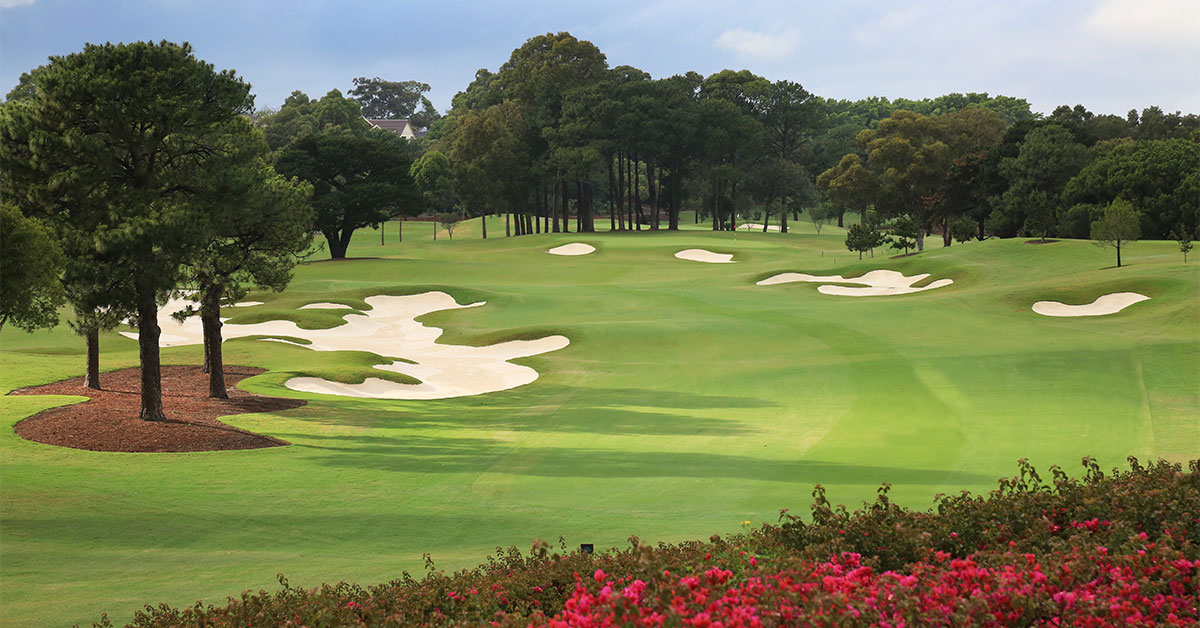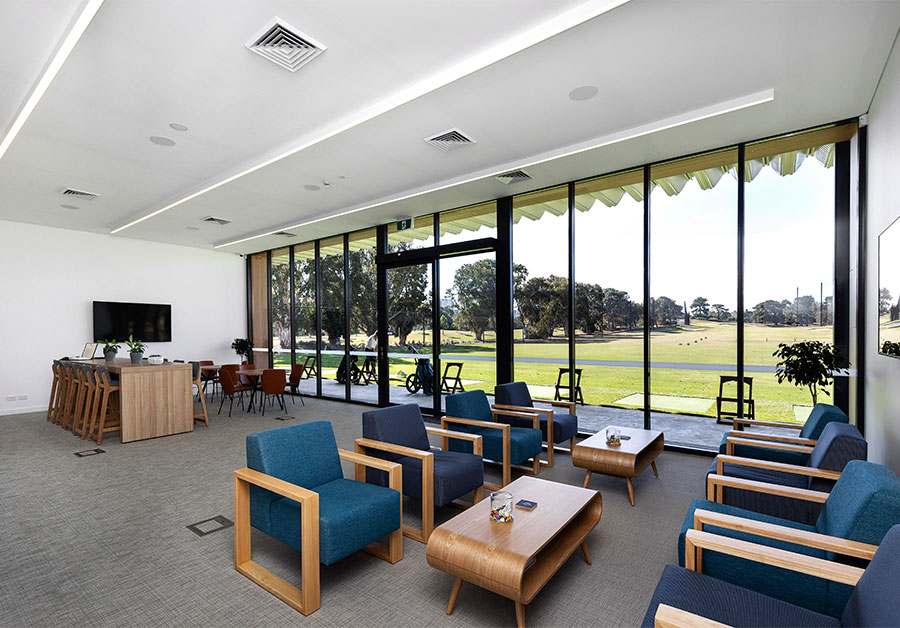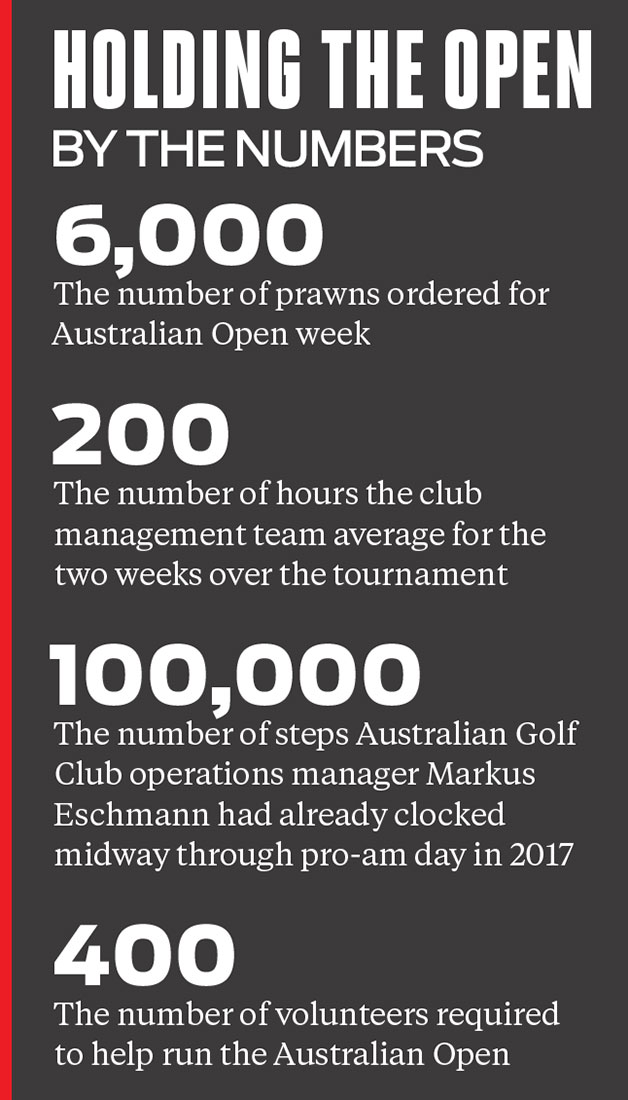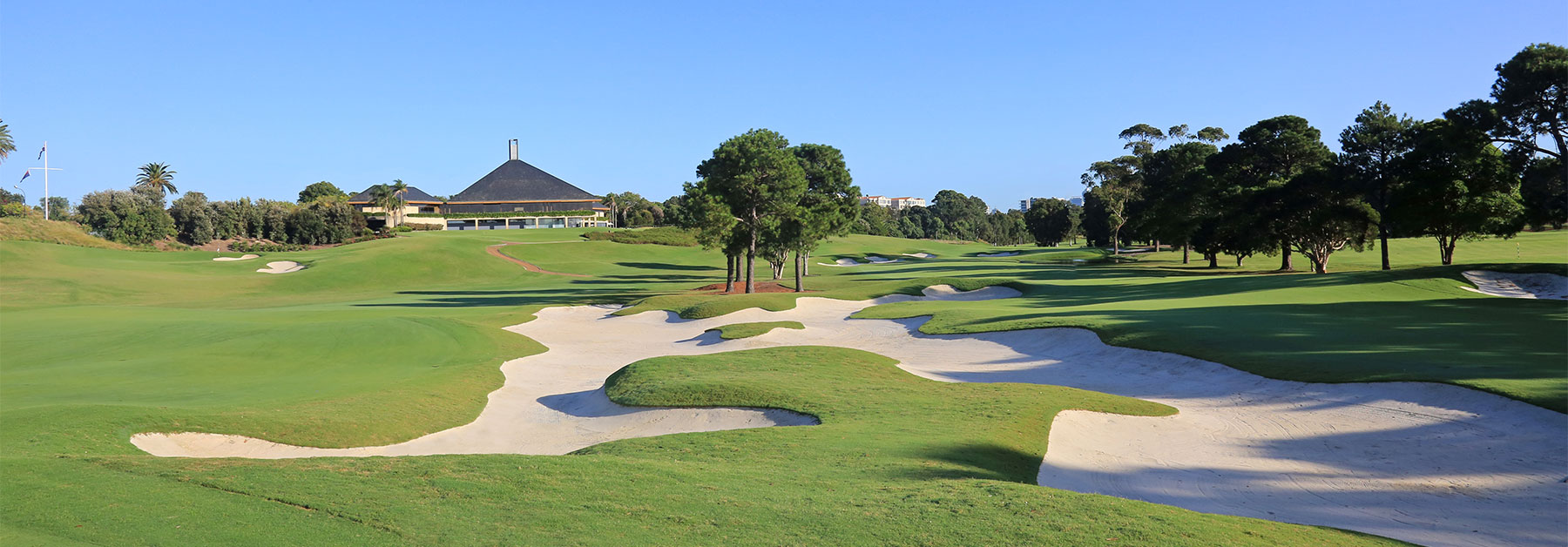Debate rages over golf-course rankings, but there’s no denying The Australian Golf Club has few challengers for the mantle of No.1 tournament venue in the country.
Course photography by Gary Lisbon
The legendary Jack Nicklaus once described the privileged folk of The Australian Golf Club as a “membership full of masochists” after being commissioned to toughen up their beloved course.
It appears those “masochistic” tendencies have infected the decision-makers at the Kensington-based club in Sydney’s affluent eastern suburbs. Why else would you want to take on the operational challenges that come with hosting your fourth Emirates Australian Open in six years?
“We’re definitely gluttons for punishment,” jokes The Australian’s operations manager, Markus Eschmann.
All jokes aside, there’s perhaps no club in the country better placed to pull off such a feat. And make no mistake, it is a remarkable achievement given the practical realities that come with an ultra-private golf club that’s on track to turn over more than 46,000 rounds of golf this year, not to mention hold 36 club events – including its club championships – in the space of 30 days right before the biggest week in Aussie golf enters its gates.
“Why do we do it (host the nation’s premier golf tournament)? Well, there are two main reasons,” Eschmann says. “One, it’s the only piece of marketing we really do as a club. We virtually give nobody the opportunity to peek over the fence, so to speak. Hosting the Emirates Australian Open is an opportunity for us to give the public a sneak-peek at what we’re about, let them know we’re still here and that we’re still great.
“Secondly, The Australian Golf Club has the longest, richest history with the nation’s premier golf tournament. This will be the 21st time we’ve hosted it. We hosted the first Australian Open in 1904, we hosted the 100th in 2004 and we hosted the 100th edition of the tournament. One of our founding members – Dr Ewan Richard Frazer – was the man largely responsible for getting the Australian Open off the ground, so it would be doing him and the club a disservice to not honour this extraordinary legacy moving forward. This is our way of supporting golf and, luckily, we’ve got the footprint here to accommodate such a showpiece event.”

Open Chequebook
In 2015 Golf Australia, the New South Wales Government and tournament promoters Lagardère announced a deal that would keep the Open in Sydney through 2023, with the scope for two “release years” in that period. As part of the deal The Australian Golf Club was given assurances it would host four more Opens before the contract expired.
“Knowing this gave us the opportunity to make long-term infrastructure decisions that would not only accommodate hosting such a big tournament but obviously greatly benefit our membership,” Eschmann says.
A big part of those decisions included injecting significant capital back into the course and the club’s ageing facilities. At the very top of the list was a new maintenance shed, which had deteriorated to a point not satisfactory for a club with such huge demand. Situated behind the fifth green and sixth tee, the club’s old workshop has been replaced with a state-of-the-art warehouse and satellite facility. Costing a cool $6 million, the new set-up allows for proper fuel and chemical storage, a water treatment plant, wash-down bays, additional machinery storage and a $60,000 gantry crane that can manoeuvre heavy machinery to all parts of the building. It’s a workspace that not only has head superintendent Phil Beal excited about his staff’s capabilities moving forward, it’s suddenly become the envy of the turfgrass industry.
“In the past we have entertained Open volunteers and staff in the working shed among machinery. Now they will be housed in the new air-conditioned staff quarters attached to the maintenance facility, which are arguably the best in the country,” Beal said.
 Just a few hundred metres away sits one of the most impressive new practice facilities in the country, too. At a cost of $2.4 million, the new set-up features a player lounge [inset] and amenities, state-of-the-art training equipment and additional netting. While the new range – funded predominantly from the generous contribution from the Australian Golf Club Foundation – won’t be quite ready for use during this year’s tournament, club members are set to be the big winners. It has everything, including a kitchen sink.
Just a few hundred metres away sits one of the most impressive new practice facilities in the country, too. At a cost of $2.4 million, the new set-up features a player lounge [inset] and amenities, state-of-the-art training equipment and additional netting. While the new range – funded predominantly from the generous contribution from the Australian Golf Club Foundation – won’t be quite ready for use during this year’s tournament, club members are set to be the big winners. It has everything, including a kitchen sink.
The club also boosted its technological offerings, installing underground fibre-optic cabling that services both the club year-round and Australian Open officials come tournament time.
“Our new underground cabling branches off into about four different locations that operates as the backbone of our internet,” adds Eschmann. “It means there is now only one internet connection. Previously we had an old ADSL line that had to be trenched on the course to allow tournament officials to communicate via radio. The fact we can now go wireless is exciting and a little bit scary.”
While all these upgrades were done with the Australian Open in mind, the club’s chief executive officer Steven Shearer said the No.1 priority will always be his members.
“It is important that the works undertaken are predominantly for the good of the course and for member enjoyment,” he said. “While it’s unfortunate the new range facility will not be functional for the Open and will instead be utilised as the tournament office, it has been extremely well received by the members and the club’s teaching professionals.”

“A club on crack”: Preparing for an Open
Naturally, the majority of members love tournament week at The Australian. There’s a level of pride knowing the Jason Days and Ernie Els of the world are walking the same fairways and playing from the same lies as you. Some just aren’t thrilled with the build-up.
“There’s always going to be the 90-10 rule – 90 percent love it, 10 percent wish we never had it,” Shearer says. “The challenge for us is maintaining that high level of service to all our members while at the same time getting everything ready for the Open. While this takes place it is business as usual for members. They don’t particularly care at the time that the Australian Open is here in four weeks. They want to know that their course is continuing to operate as expected.”
 The planning starts a year out when Beal and his team begin Phase 1 of their volunteer recruitment. “We advertise in a journal for qualified greenkeepers to come in and help. We take the initial best 50 and then knock that list down to 30,” he says.
The planning starts a year out when Beal and his team begin Phase 1 of their volunteer recruitment. “We advertise in a journal for qualified greenkeepers to come in and help. We take the initial best 50 and then knock that list down to 30,” he says.
Six months before the first ball is struck, Beal and his team get to work on course bunkering. He said it’s important they don’t put too much sand in the bunkers too close to the tournament to avoid them being too soft and conducive to plugged lies. Coring and top-dressing is completed during spring and the timing is vital to ensure optimal playing surfaces come December.
“The tournament director visits the club periodically to check on progress and will dictate the heights of the fairways and rough, and closer to the event adjust the green speed accordingly,” Beal says.
Asked what he believes the optimum speed should be for tournament week, Beal was adamant they needn’t push the limits.
“I don’t think they need to be any quicker than 12 on the stimpmeter but they won’t get to that. If these greens get to 11 or 11.5 they’ll be fantastic to play on.”
Players and spectators will also notice a different look from tee to green this year. “We’ve striped the fairways the past three tournaments but we’re not doing that this year. We’re going to mow them all in a forward direction, from tee to green, which I think will be a sensational look.”
The four-weeks-to-go milestone is when the preparations really ramp up.
“We go from an already busy golf course from an operational point of view, to a golf club on crack, particularly during Australian Open week,” Eschmann says.
“We go from 150 members and their guests using the course on an average day, to 2,000 people walking through the clubhouse at any one time during Open week. But the footprint doesn’t change, it’s still the same size building and facilities.”
Adds Shearer: “I had a guy arrive at 7am on Monday with a forklift, needing to get to somewhere on the course. That’s when I knew we were officially four weeks away from the tournament. My phone rings every few minutes from now until then.”
Naturally, catering becomes a big challenge because there’s always a fear of under-supplying at an event that attracts up to 60,000 spectators for the week.
“We’re lucky in that we’ve created really good relationships with our suppliers, allowing us to return stock where necessary if we do over-cater,” Eschmann says. “But the reality is we can’t afford to understock or understaff.”
He says it’s impressive to think the club only shuts for play for a maximum of 10 full days during the whole ordeal.
“A lot of clubs close for a month in the lead-up to a tournament like this. Some places in the UK even force players to hit off mats months prior, in order to preserve the course. That says something about our membership – they just want to keep coming out to play golf. They’re extremely proud and take great enjoyment playing their course and that’s a wonderful thing in our eyes.”
But is it really worth all those hours and stress coring greens and comforting members for four days of genuine star power?
“Absolutely,” Shearer says. “We feel the interest in our club spikes during an Australian Open held here. People who aren’t members start asking how they can become one. We obviously aren’t in the business of selling green fees so that’s not important. But as a high-profile club it’s important we continue to host this tournament. We were guaranteed a good field this year with the Presidents Cup and that’s really exciting for everyone. Hopefully one day the Australian Open gets what it really deserves and has a better place in the global golf calendar, maybe even become part of a bigger tour. We’re just proud to still be playing a part in helping it get there.”


